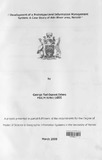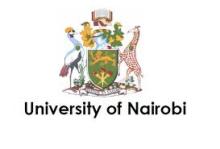Resource information
This study addresses certain aspects of data modeling with respect to Geographic
information systems (GIS). The primary objective of this project is an attempt to
develop an automated Land Information Management System (LIMS). In Kenya today,
land information is held mostly in paper form, managed manually and even the paper
records themselves are not optimally organized. The process of retrieving and
disseminating this information is inefficient, time consuming and cannot support timely
decision making.
This project represents the formalization of the geometrical portion of data concerning
certain kinds of geographical phenomena. This formalization is modeled in unified
modeling language (UML) to develop a database. The UML is used to capture both the
static and dynamic components of the cadastre given its many entities and attributes.
The report develops a prototype database that is based on the Cadastre 2014
document and attempts to customize the database to suit the Kenyan environment. The
project concludes that UML presents an opportunity to render the data and its
processes in a manner that reduces redundancy and eliminates duplication of roles in
the cadastral data recording system. Modeling presents a simpler way of presenting a
standardized way for designing the database. This study has developed a prototype LIMS using the object-oriented modeling approach. This approach provides a natural method for describing real world spatial entities, avoids data fragmentation and enables useful capabilities for managing databases. The object-oriented modeling allows better integration, data consistency,
minimizes reformatting, convenient data merging and saves a lot of time. It is a feasible
approach to allow data sharing among different organizations and users.


